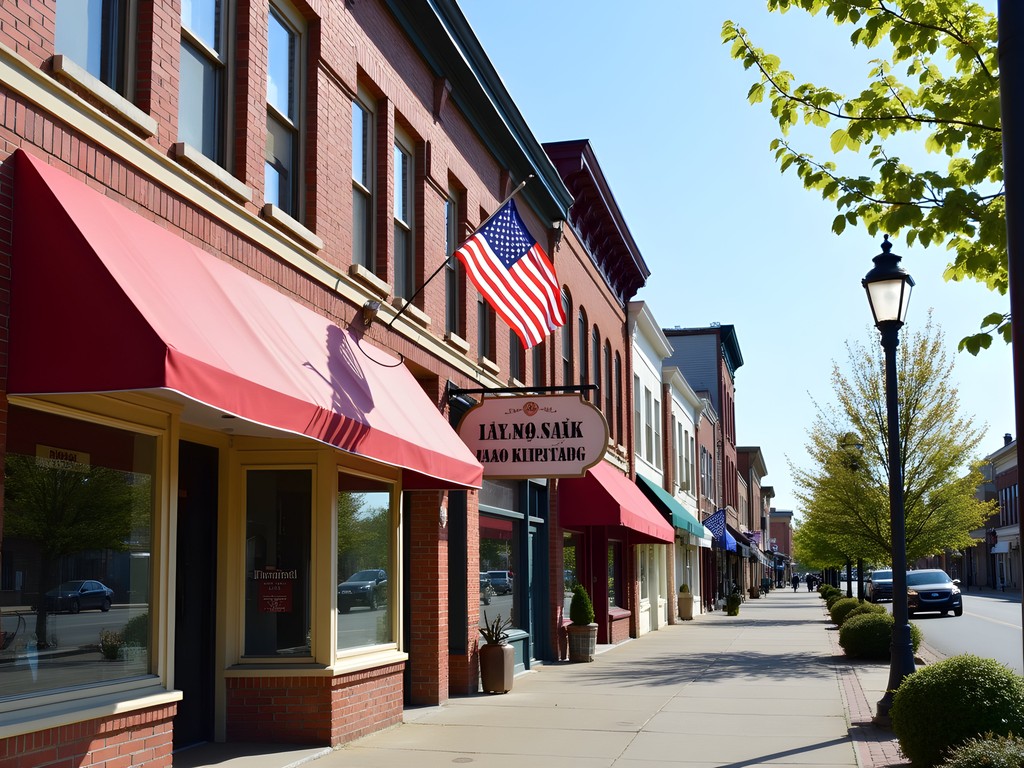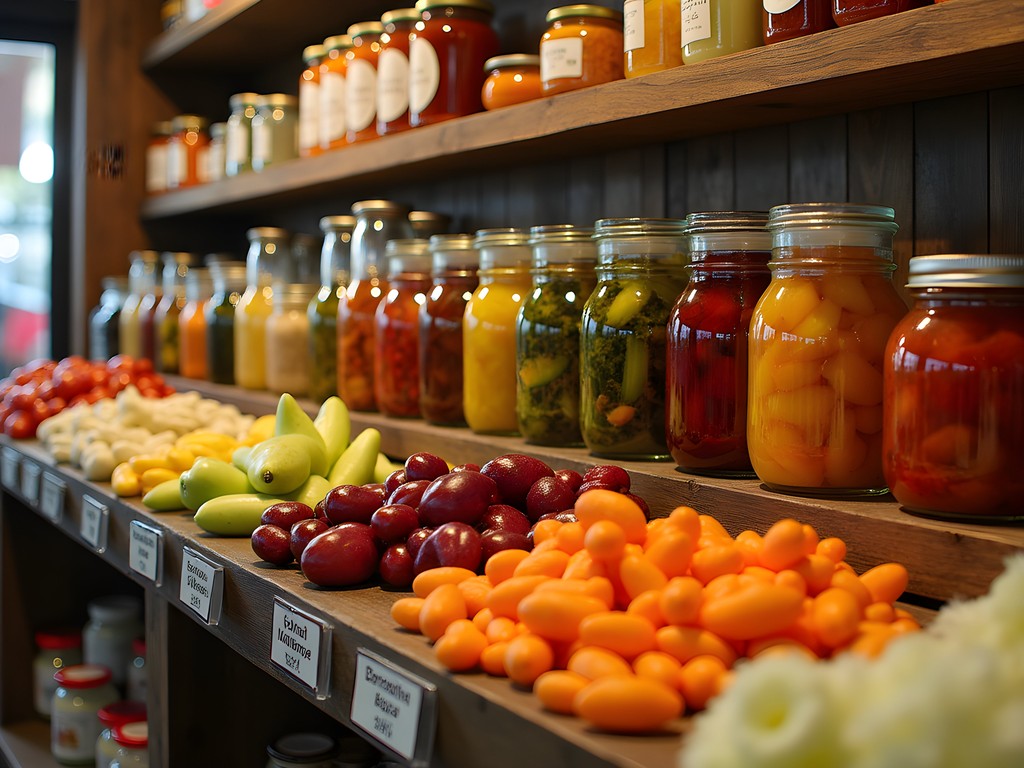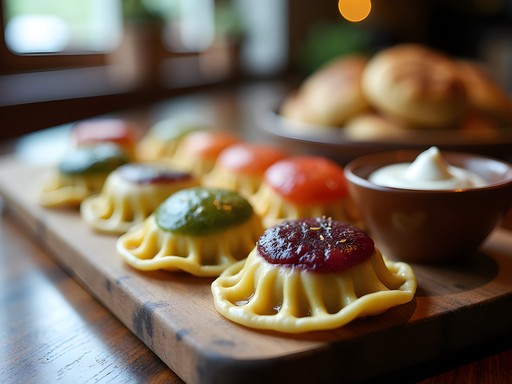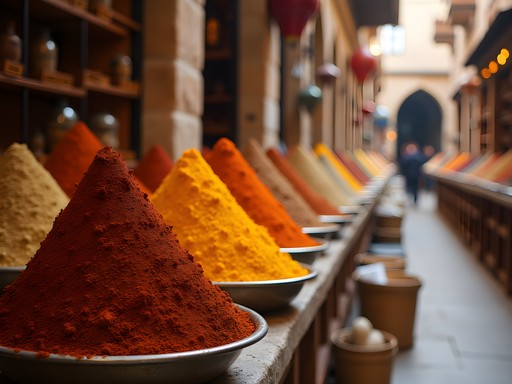Disclosure: This article contains affiliate links. We may earn a commission from purchases at no extra cost to you, which helps our travel content.
As someone who builds structures for a living, I've developed an appreciation for things crafted with precision and cultural integrity. Living in Japan has heightened my sensitivity to how traditional techniques persist alongside modern innovations. So when my latest work break coincided with a friend's wedding in Cleveland, I seized the opportunity to explore nearby Parma, Ohio—a suburb with one of America's most vibrant Polish communities. Having grown up in Florida with Cuban influences dominating the culinary landscape, I was eager to immerse myself in a completely different immigrant food tradition. What I discovered was a weekend-worthy destination where Old World craftsmanship meets Midwestern hospitality, all centered around the humble yet transcendent pierogi. This isn't the Poland you'd find in travel magazines, but rather Poland's culinary DNA transplanted and evolved in America's heartland.
The Polish Village: Parma's Beating Heart
Parma's Polish Village district along Ridge Road feels like stepping into a carefully preserved time capsule of Eastern European heritage. Unlike the polished, tourist-ready ethnic neighborhoods you might find in major cities, there's an authenticity here that reminds me of visiting small regional workshops in rural Japan—places where craft still matters more than commerce.
The district is anchored by a collection of family-owned businesses that have operated for generations. Red and white Polish flags flutter alongside American ones, and storefronts feature bilingual signage. What struck me immediately was how the area functions as a genuine community hub rather than a tourist attraction. On my first morning, I watched elderly residents greeting each other in Polish while younger families—clearly several generations removed from immigration—still participated in cultural traditions.
I spent my first hour simply walking the district, noting the architectural details of buildings that blend American Midwest pragmatism with subtle Eastern European flourishes. Several buildings feature the distinctive parapet rooflines and decorative brickwork that remind me of pre-war Polish urban design, though adapted to their Ohio setting. As a builder, I appreciate these hybrid architectural identities—they tell the story of adaptation without abandonment of heritage.
The neighborhood's churches deserve special attention, particularly St. Charles Borromeo with its stunning stained glass windows depicting Polish saints alongside American imagery—a physical manifestation of cultural integration that's reflected in the food I was about to discover.

💡 Pro Tips
- Visit on Saturday morning when the neighborhood is most active with locals doing their weekly shopping
- Look up at the building facades—many feature subtle Polish architectural details
- Stop by the Polish American Cultural Center to get oriented with maps and background information
Pierogi Perfection: Traditional Techniques
If you want to understand Parma's Polish food scene, you must begin with the pierogi—those half-moon dumplings that showcase the beautiful economy of peasant cuisine. Like many traditional foods I've encountered while traveling, the simplicity of ingredients belies the complexity of technique.
My first stop was Little Polish Diner, an unassuming establishment where the kitchen's workflow reminded me of a well-organized construction site—everyone knowing their role in a choreography perfected over decades. I took a seat at the counter specifically to watch the pierogi-making process, something the staff seemed accustomed to curious visitors doing.
What distinguishes Parma's pierogis from mass-produced versions is immediately apparent in the dough—a perfect balance of tenderness and resilience. The owner explained that they still use wooden rolling pins rather than mechanical presses, believing the inconsistencies create a more pleasing final texture. This reminded me of Japanese craftsmen who insist certain tools cannot be improved upon despite technological advances.
I ordered their sampler platter featuring six varieties: potato and cheese (the classic), sauerkraut and mushroom, sweet cheese with raisin, meat, potato and onion, and a seasonal plum filling. Each arrived perfectly crimped and pan-fried with browned butter and caramelized onions. The contrast between the crisp exterior and tender filling showcases what happens when simple ingredients meet masterful technique.
For those looking to recreate these at home, I recommend investing in a quality rolling pin. The weight and balance make a noticeable difference when working with pierogi dough, which needs to be rolled thin but not transparent.
At Krakow Deli, I watched multigenerational families working together, with techniques clearly passed down rather than learned from cookbooks. The grandmother-aged woman pinching each pierogi closed used her thumb and forefinger in a distinctive motion that created a scalloped edge—a regional signature from southeastern Poland, I was told.

💡 Pro Tips
- Order pierogis 'Polish style' with sour cream on the side rather than already dressed
- Try at least one sweet and one savory variety to understand the range
- Visit Little Polish Diner early—they often sell out of popular varieties by mid-afternoon
Beyond Pierogis: Parma's Diverse Polish Cuisine
While pierogis might be the gateway to Polish cuisine, Parma's culinary landscape offers much more depth. As someone who spends months at a time in different cultural contexts, I've learned to look beyond the obvious culinary landmarks.
At Polka Dot Café, I discovered hunter's stew (bigos)—a hearty mixture of sauerkraut, various meats, and wild mushrooms that the server explained had been simmering for three days. The fermentation process creates layers of flavor that reminded me of traditional Japanese preparations where time is considered an essential ingredient. The café itself operates from a converted bungalow, with dining rooms that feel more like eating in someone's home than a restaurant.
Euclid Fish Company, despite its non-Polish name, offers exceptional smoked fish prepared according to Eastern European traditions. Their smoked mackerel particularly impressed me—the smoking process clearly controlled with the same precision that earthquake-resistant structures require: attention to time, temperature, and material properties.
For breakfast, Seven Roses Deli serves pączki (Polish donuts) that demonstrate why the commercialized versions pale in comparison. These yeast-risen pastries filled with rose hip jam achieve the perfect density—substantial without heaviness. The dough has a subtle fermented complexity missing from chain bakery offerings.
I also discovered that Polish cuisine has a remarkable tradition of preservation methods. At Krakow Foods, the pickle selection alone occupied an entire refrigerated wall, with varieties fermented according to regional recipes. The proprietor explained how different salt concentrations and fermentation vessels affect the final texture—another reminder of how material science appears in culinary traditions.
For home cooking enthusiasts, I found the fermenting crock at the Polish Village Gift Shop to be an excellent investment. These traditional stoneware vessels maintain ideal conditions for creating your own sauerkraut or pickles, with results far superior to quickpickled versions.

💡 Pro Tips
- Ask for a taste of house-made sauerkraut before ordering—each establishment has their own fermentation style
- Try Polish beers like Żywiec or Okocim with your meal for traditional pairing
- Many shops offer vacuum-sealed smoked meats that travel well if you want to bring some home
Hidden Bakeries and Sweet Discoveries
The structural integrity of Polish pastries deserves the same respect we give to load-bearing walls in construction—both require precise calculations and material knowledge. Parma's bakeries showcase this engineering marvel in edible form.
European Bakery on Ridge Road became my morning ritual during my stay. Arriving just after their 6 AM opening, I joined local workers grabbing breakfast and witnessed the fresh-from-the-oven procession of breads and pastries. Their rye bread uses a sourdough starter the owner claims is over 80 years old—brought from Poland and maintained through generations. The structural integrity of this bread is remarkable; dense yet not heavy, with a crust that provides the perfect resistance before giving way.
What fascinated me from a builder's perspective was how the bakeries maintain traditional wood-fired ovens despite modern code requirements. At Rudy's Strudel & Bakery, the owner proudly showed me how they'd adapted their historic brick oven to meet safety standards while preserving the thermal properties that give their kolaczki cookies their distinctive texture—crisp edges with tender centers.
The chrusciki (angel wings) at Seven Roses deserve special mention. These delicate fried pastries dusted with powdered sugar demonstrate the importance of dough lamination—creating thin layers that puff apart during frying. The technique reminded me of precision folding in Japanese origami, where each fold must be exactly placed.
For home bakers wanting to try Polish recipes, I recommend the baking stone to help recreate the thermal environment of traditional ovens. The stone's heat retention properties help achieve the distinctive crust formation essential to Polish breads.
One unexpected discovery was makowiec—a poppy seed roll with a spiral pattern that any engineer would appreciate. The ratio of filling to dough is crucial; too much filling and the structure fails during baking. At Colozza's Bakery, their version achieves perfect structural balance while delivering complex flavor from ground poppy seeds mixed with honey and citrus zest.

💡 Pro Tips
- Visit bakeries before 9 AM for the best selection
- Many bakeries offer half-loaves of bread if you're traveling solo
- Ask about seasonal specialties—many traditional pastries only appear for specific Polish holidays
Local Markets and Take-Home Treasures
As someone who travels extensively, I've developed a habit of seeking out local markets not just for the immediate experience but for transportable treasures that extend my connection to a place. Parma's Polish markets offer exceptional opportunities for this practice.
State Road Meats functions as both butcher shop and specialty grocer, with an impressive selection of smoked kielbasa varieties hanging from ceiling hooks. The owner explained how each sausage style originated from different regions of Poland, with varying spice profiles and smoking techniques. I selected a vacuum-sealed hunter's sausage that traveled well in my checked luggage back to Japan, where I shared it with colleagues fascinated by this taste of Polish-American culture.
Parma's Polish markets also excel at packaged goods that travel well. At Krakow Deli, I discovered an impressive selection of Polish candies and chocolates, including Krowki ("little cows")—caramel-filled candies with a distinctive texture between fudge and toffee. These make perfect gifts that survive long flights intact.
For kitchen enthusiasts, Treat Town USA offers an excellent selection of Polish pottery and cooking implements. I purchased a hand-painted stoneware baking dish that now serves as both a functional tool and a conversation piece in my Yokohama apartment. The thermal properties of this traditional stoneware provide excellent heat distribution—something I appreciate both as a cook and as someone who understands material performance.
Perhaps my most valuable discovery was at Little Polish Diner's small market section, where they sell their pierogi dough pre-portioned and frozen. The owner provided detailed instructions for proper handling and cooking, allowing me to recreate a taste of Parma months later. This kind of culinary souvenir creates a lasting connection to a destination that photographs alone cannot match.
For spice lovers, don't miss the house-blended paprika varieties at State Road Meats. Polish cuisine uses paprika differently than its Hungarian neighbors, often in more subtle applications, and these custom blends reflect regional Polish variations rarely found in commercial products.

💡 Pro Tips
- Bring a collapsible cooler bag for refrigerated purchases if your hotel has a mini-fridge
- Ask about vacuum-sealing services for items you want to transport home
- Many shops can ship non-perishable items internationally if something won't fit in your luggage
Final Thoughts
As I packed my suitcase with vacuum-sealed sausages, jarred pickles, and that beautiful piece of Polish pottery, I reflected on how Parma represents something increasingly rare in our homogenized world—a place where culinary traditions haven't been watered down for mass appeal. Like the earthquake-resistant structures I design, these food traditions have proven remarkably resilient despite tremendous pressure to change. What makes Parma special isn't just the authenticity of its Polish food but how that food continues to function as community glue rather than tourist attraction. For travelers seeking genuine cultural experiences without international flights, this Cleveland suburb offers a weekend immersion into Polish culinary heritage that satisfies both the curious palate and the analytical mind. Whether you're a dedicated foodie or simply someone who appreciates craftsmanship in all its forms, Parma's Polish Village rewards those willing to look beyond the obvious tourist trails.
✨ Key Takeaways
- Parma's Polish food scene represents authentic cultural preservation rather than commercialized ethnic tourism
- The techniques behind traditional pierogi-making demonstrate craftsmanship comparable to fine architectural details
- Many Polish specialty foods are designed for preservation, making them excellent souvenirs
- The community aspect of Parma's Polish Village creates an immersive cultural experience beyond just the food
📋 Practical Information
Best Time to Visit
year-round, though winter months feature special holiday foods
Budget Estimate
$150-200 for a weekend including accommodations and meals
Recommended Duration
2-3 days
Difficulty Level
Easy
















Comments
Sophia Gomez
Sarah, this post resonated deeply with me! Being from Pittsburgh, we have our own Polish community, but I had no idea Parma's was so vibrant. I travel frequently for business to Cleveland and always stay downtown, completely missing this cultural treasure. Last week I finally took an afternoon to explore based on your recommendations. The Little Polish Diner was everything you promised! I even picked up a beautiful hand-painted Polish pottery mug from that little shop you mentioned. It's now my favorite morning coffee cup at the office. Your structural engineering perspective on the craftsmanship of these foods was such a unique lens. Looking forward to your next cultural deep-dive!
skylegend
Those bakery photos are killing me! 🤤 Need to plan a trip ASAP!
greengal
Just got back from Parma last weekend and used your blog as a guide! The Polish Village was AMAZING! We bought way too much at Krakow Deli and had to get an extra bag for the flight home. Worth it! The pottery shop you mentioned had the most beautiful pieces too. Thanks for this perfect timing!
Sarah Martinez
So happy to hear this helped with your trip! I'm still using the pottery I bought there daily. Did you try the paczki?
greengal
YES! Rose-filled ones from Colozza's Bakery. Absolute heaven. Already planning a return trip for Paczki Day next year!
wavetime
My grandparents were Polish immigrants who settled in Cleveland. Reading this brought back so many memories of Sunday dinners at their house. The pierogi-making process you described is exactly how my babcia taught me - especially that special pinch to seal them! Have you tried the chrusciki (angel wings) at Rudy's Strudel? They're heavenly.
luckymood
Never tried Polish food before. Are pierogies spicy?
wavetime
Traditional pierogies aren't spicy at all! They're more like comfort food - potato, cheese, sauerkraut fillings. But some places do fusion versions now with spicier options.
luckymood
Thanks! Sounds like something I could enjoy then!
Frank Garcia
Interesting perspective on Parma's Polish heritage. I've been documenting ethnic food enclaves across the US for my backpacking blog, and it's fascinating how these cultural islands persist through generations. The pierogi techniques you described mirror what I saw in Krakow last year - that pinching method is distinctive. Did you notice any regional variations in the fillings compared to authentic Polish versions?
Sarah Martinez
Great observation, Frank! I did notice the Parma versions tend to use more cheese in their potato fillings than what I had in Poland. Also, several places offered 'Americanized' options like buffalo chicken and jalapeño popper fillings alongside the traditional ones.
redzone
OMG YES!!! I grew up in Parma and the Polish food scene is INCREDIBLE! So happy someone is finally giving it the attention it deserves! Those little bakeries are my childhood!
bluewalker
Great post! Which pierogi place would you say is the absolute must-visit if someone only has time for one?
Sarah Martinez
Thanks for asking! If you can only hit one spot, Little Polish Diner on Ridge Road is my top pick. Their potato and cheese pierogies are the most authentic I found!
bluewalker
Perfect, adding it to my list for next month's Cleveland trip!
Fatima Sims
Sarah, you've captured what travel is truly about - finding those cultural pockets that preserve traditions with such pride! I visited Parma last winter during a cross-country road trip and was blown away by the food scene. Beyond the pierogies (which were life-changing), did you try the stuffed cabbage (gołąbki)? The little place on Ridge Road makes them exactly like my Polish friend's grandmother does - with a touch of dill in the tomato sauce that makes all the difference. Your observation about the precision in both architecture and food preparation is spot-on. There's something so beautiful about communities that maintain these culinary traditions across generations.
hikinggal
Fatima - which place on Ridge Road? Adding it to my list for when I visit!
Fatima Sims
@hikinggal It's called Babcia's Kitchen! Easy to miss from the outside but absolutely worth finding. Cash only FYI!
smartqueen
Just got back from Parma after reading this post - you HAVE to try the paczki at Rudy's Strudel! We went on a Friday morning and they had like 20 different fillings! The plum and rosehip ones were to die for! Thanks for the recommendation Sarah!
wandermate
Ooh thanks for the tip! Adding this to my list for next weekend!
Venture X
Premium card with 2X miles, $300 travel credit, Priority Pass